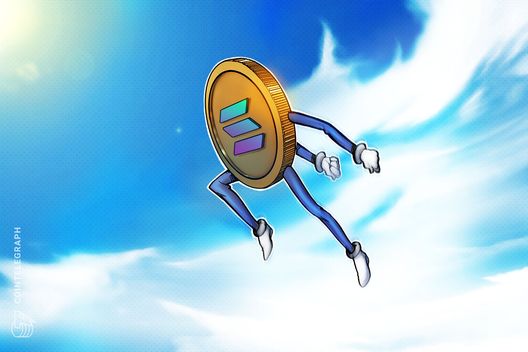
Key takeaways:
SOL struggles to maintain $200 as on-chain activity declines and leveraged demand persists at low levels.
Approval of a spot ETF and institutional backing could elevate SOL prices, yet current fundamentals indicate limited potential for a rally.
Solana’s native token (SOL) has consistently fallen short of holding above $200 for the past six weeks, leading traders to question the factors limiting its upside potential. This concern is further amplified by competitors Ether (ETH) and BNB (BNB) recently achieving new all-time highs.
The anticipated approval of a Solana spot exchange-traded fund (ETF) in the U.S., along with companies indicating plans to incorporate SOL into their corporate reserves, could drive the token above $250. However, three specific conditions must be satisfied before a sustainable upward trend can begin.
Sluggish on-chain and futures data makes investors cautious
Blockchains ranked by seven-day fees. Source: Nansen
For SOL buyers to regain confidence, there needs to be an uptick in on-chain activity on Solana. Network fees have decreased by 17% compared to the previous week, and the number of transactions has seen a 10% decline. In contrast, BNB Chain’s fees have increased by 6%, while transaction numbers have remained stable. Additionally, Ethereum’s layer-2 chains are witnessing growth, with transactions on Base up 14% and Arbitrum up 20%.
In relative terms, Solana’s fee levels are still significant given the network’s total value locked (TVL) of $12.5 billion, compared to Ethereum’s nearly $100 billion. Nevertheless, Solana’s chain revenue has plummeted 91% since January’s peak, coinciding with the launch of the Official Trump (TRUMP) token and the broader memecoin craze.
The subdued demand for bullish leverage on SOL futures contributes to the cautious sentiment.
SOL perpetual futures annualized premium. Source: laevitas.ch
Under normal conditions, perpetual futures typically reflect an annualized premium ranging from 8% to 14%, capturing capital costs and counterparty risk. The current rate of 10% suggests balanced demand, which isn’t inherently negative but raises mild concerns considering SOL’s price has surged 39% over the past two months.
Binance’s top-trader long-to-short ratio has sharply tilted toward bearish positioning. This indicator offers a broader glimpse of sentiment, incorporating futures, margin, and spot markets.
SOL top traders’ long-to-short ratio at Binance. Source: CoinGlass
While demand for bullish SOL exposure on Binance peaked at a monthly high last Saturday, it has since dropped considerably. Data from derivatives indicates that while whales and market makers are not extremely bearish, they continue to be cautious about SOL decisively breaking above $200.
Institutional backing and SEC actions remain key catalysts
SOL’s price has shown minimal reaction to reports indicating that Galaxy Digital, Multicoin Capital, and Jump Crypto are collaborating to raise $1 billion for a Solana-focused digital asset treasury firm. Bloomberg reported that the Solana Foundation has endorsed the initiative, yet this news hasn’t generated enough momentum.
Related: Solana devs billed $5K for single query via Google Cloud’s BigQuery
The final challenge for SOL to reach $250 hinges on a pending decision by the U.S. Securities and Exchange Commission (SEC) regarding multiple Solana spot ETF filings. Bloomberg analyst Eric Balchunas has estimated the likelihood of approval to exceed 90%, with the SEC’s final deadline set for mid-October.
Although SOL may still rise above $200 prior to these catalysts materializing, the chances of a sustainable rally remain slim due to weakened on-chain activity, limited demand for bullish exposure, and ongoing uncertainty surrounding the ETF outcome.
This article is for general information purposes and is not intended to be and should not be taken as legal or investment advice. The views, thoughts, and opinions expressed here are the author’s alone and do not necessarily reflect or represent the views and opinions of Cointelegraph.

